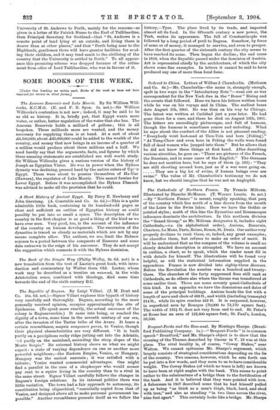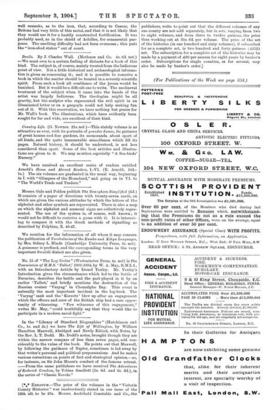Bregant - Porcla and the Han - weal. By Montagu Sharpe. (Brent- ford Publishing
Company. Is.)—" Bregant-Forda " is in common speech" Brentford," and Mr. Sharpe's object is to show that the crossing of the Thames described by Caesar in V. 18 was at this place. The rival locality is, of course, "Cowey Stakes," near Walton. We cannot epitomise Mr. Sharpe's argument, which largely consists of strategical considerations depending on the lie of the country. Two reasons, however, which he sets forth can be put into a few words, and they seem to us to have considerable weight. The Cowey Stakes (of which no trace is left) are known to have been at right angles with the bank. This seems to point rather to the substructure of a bridge than to the fortification of the bank. And it is believed that they were pointed with iron. A fisherman in 1807 described some that he had himself pulled up as being "as thick as a man's thigh, black, hard, and shod with iron," and also as standing "in two lines across the river, nine feet apart." This certainly looks like a bridge. Mr. Sharpe
well remarks, as to the iron, that, according to Caesar, the Britons had very little of this metal, and that it is not likely that they would use it for a hastily constructed fortification. It was probably used, as in the shield of Achilles, for ornamental pur- poses. The smelting difficulty had not been overcome ; this puts the "iron-shod stakes" out of court.







































 Previous page
Previous page